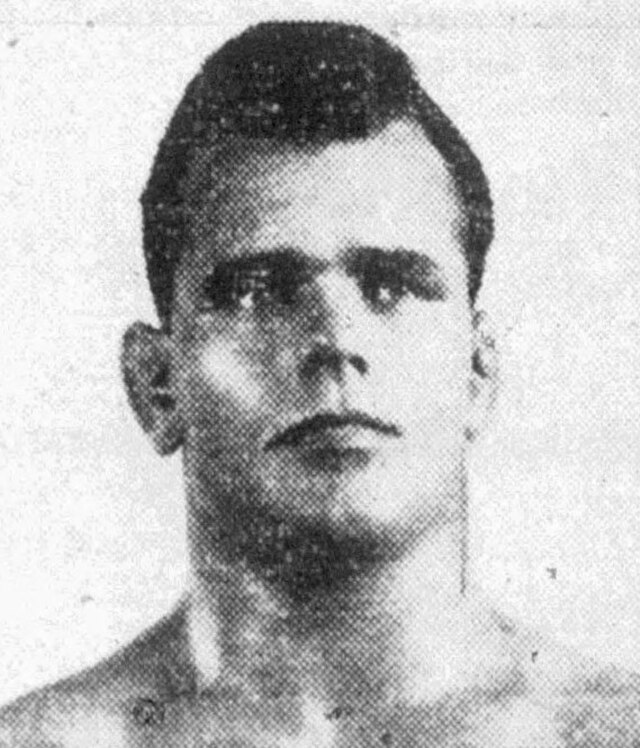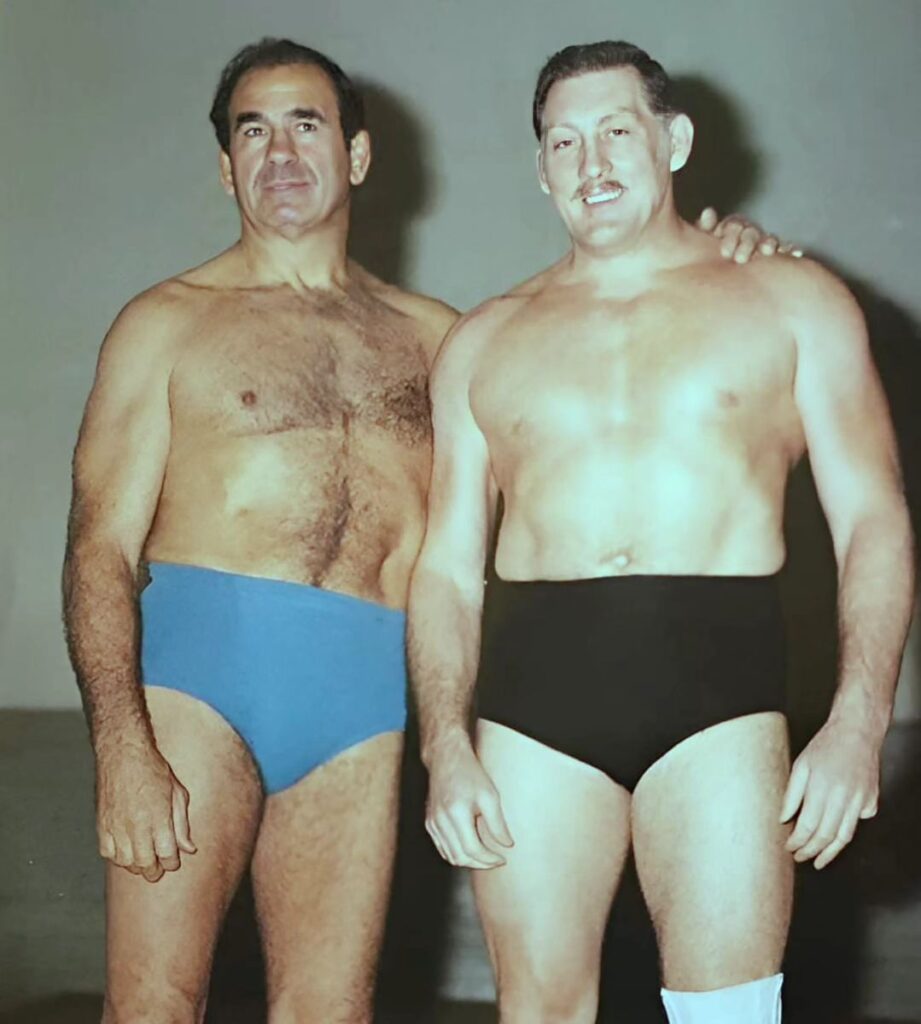Karl Gotch: Wrestling Legend & Pioneer

Karl Gotch is a legendary figure in amateur and pro wrestling. His work and development of training routines helped these forms of wrestling grow to incredible heights.
Here is a short history of the life of legendary wrestler Karl Gotch. Check out his story below and learn how Gotch survived a concentration camp and became a wrestling icon.
| Birth Name: | Charles Istaz |
| Date of Birth: | August 3, 1924 |
| Place of Birth: | Antwerp, Belgium |
| Died: | July 28, 2007 (aged 82) Tampa, Florida, U.S. |
| Ring Name: | Karl Gotch, Karl Krauser |
| Billed height: | 6 ft 1 in (185 cm) |
| Billed weight: | 245 lb (111 kg) |
| Billed from: | Hamburg, Germany |
| Trainer: | Billy Riley |
| Debut: | 1950 |
| Retired: | January 1, 1982 |
Who is Karl Gotch?
Karl Gotch, originally named Charles Istaz, was a Belgium-born professional wrestler and catch wrestling practitioner and trainer. He played a significant role in the development of modern pro wrestling and the popularization of catch wrestling.
The Early Life of Karl Gotch
Charles “Karl” Istaz was born in Antwerp, Belgium, to a Hungarian father and a German mother. He grew up in a modest home and became passionate about sports and athletics.
Istaz originally began practicing Greco-Roman-style wrestling. Within Belgium, Charles gained notoriety for his wrestling and sportsman abilities.
Karl regularly competed at the famous Hippodrome, where Belgium’s biggest boxing and wrestling events were held.

Surviving The Holocaust
During World War 2, Istaz and members of his family were captured and imprisoned by the Nazis. They were sent to the REIMAHG(Lager E Camp) located in Kala, Germany.
Istaz and his family weren’t Jews, but the Nazis accused his father of being a thief. In later interviews, Karl Gotch refuted these reports.
Gotch said the real reason for his family being sent to REIMAHG was because his father was an atheist. Particularly because he was part of the Atheist group called “The Order of the Buffalo.”
His father had the group’s 3-dot tattoo, which the Nazi officers noticed before arresting them. The catch wrestler nearly died of starvation before being rescued by the Soviet army.
The Olympics & Gotch’s Wrestling Training
Three years after being liberated from a concentration camp, Charles qualified to compete at the 1948 Olympics. Gotch competed in the heavyweight freestyle and Greco-Roman divisions but medaled in neither.
Karl learned catch wrestling from famous catch wrestling trainer Billy Riley while as a young athlete. The Belgian wrestler became proficient in this form of submission wrestling,
He competed in legitimate catch wrestling matches before getting into pro wrestling in the 1950s.
Gotch was also a practitioner of Pehlwani, a South Asian form of wrestling predominantly practiced within India.
Through his training in Pehlwani, Gotch learned various calisthenic and bodyweight conditioning routines. These same training routines the Gotch later became famous for doing.

Gotch’s Pro Wrestling Career
After training in Billy Riley’s famous Snake Pit, Istaz began working as a pro wrestler. He originally went by the ring name “Karl Krauser” before switching to the more universally known “Karl Gotch.”
Karl developed a “shoot style” from his catch wrestling background, meaning he did legitimate moves, but in a worked style. Gotch began his pro wrestling career, working throughout Europe before he got his break in North America.
While wrestling in North America, Gotch wrestling NWA-affiliated wrestling promotions across the US.
In 1961, Gotch won the AWA Heavyweight title and had a long feud with wrestling great Lou Thesz. Eventually, losing the title to Thesz before moving on to another wrestling territory.
Gotch’s time working in North America was cut short in 1962 after an incident with NWA champion Buddy Rogers. This incident led to Karl basically being blackballed from working in the US.
This led Gotch to begin working in Japan, where he became an icon. The Japanese wrestling fans loved the more realistic style that the Belgian wrestler used.
Gotch wrestled in the first New Japan Pro Wrestling event on March 6th, 1972. His pro wrestling career continued until 1982 when Gotch had his last match—pinning Yoshiaki Fujiwara with his patented German suplex.
Karl Gotch: Legendary Pro Wrestling Trainer
As well as being a legendary pro wrestler, Gotch was also known for his work as a pro wrestling trainer. He was a trainer of numerous legendary Japanese pro wrestlers, who used what would be called “strong style.”
Some of the notable wrestlers that Gotch trained included:
- Antonio Inoki: Creator of NJPW, who was one of Gotch’s most gifted students.
- Billy Robinson: A highly-touted English wrestler who worked worldwide and later became a famous catch-wrestling trainer.
- Satoro Sayama: The original Tiger Mask, who wrestled for decades and went on to found the MMA promotion Shooto.
- Yoshiaki Fujiwara: One of the original stars of NJPW, who is famous for the Fujiwara armbar.
- Kazuo Yamasaki: A famous Japanese wrestler of the 1970s and 1980s who later competed in early MMA events.
Gotch put these wrestlers and dozens more through grueling workouts. Not only forcing them to do thousands of reps of bodyweight conditioning but also brutal wrestling training.
The pro wrestling trainer’s sessions were sometimes more like torture than training. He legitimately beat up his students in a working sense. Training for hours a day and putting his students in various painful wrestling holds.
Even though Gotch trained many legendary wrestlers, he didn’t train just anyone. Before he would even consider taking on a student, they had to complete his warm-up.
This included around a thousand reps of bodyweight exercises that had to be completed before a certain time limit.
Karl’s style of wrestling training laid the foundation for how future wrestling academies trained their wrestlers.

Karl Gotch’s Infamous Training Routines
What Karl Gotch is more known for is the brutality of his training routines. Throughout his life as an athlete, Gotch adapted various styles of physical training, which he practiced daily.
Everything from:
- Squats
- Deadlifts
- Chin-ups
- Push-ups
- Carries (such as farmer’s carries and sandbag carries)
- Mace swings
- Kettlebell swings, snatches, cleans, and presses
- Indian club circles and swings
- Bench presses
- Overhead presses
Gotch’s Infamous Card Workout
One of Gotch’s most infamous workout routines included a deck of cards. Each type of card and number indicated a different exercise with different rep counts.
- Spads: Hindu Push-Ups
- Clubs: Jump Squats
- Diamonds: Hindu Puh-Ups
- Hearts: Half-Moon Push-Ups
- Joker 1: 40 Hindu Push-Ups
- Joker 2: 20 Half-Moon Push-Ups
- Red Cards: Normal Reps
- Black Cards: Double The Reps
Gotch would continue drawing cards and doing reps until he was satisfied with the quantity of reps.
The Death of Karl Gotch
After Karl Gotch retired from pro wrestling, he moved back to the US and lived in Tampa, Florida. He, on occasion, continued training pro wrestlers and taught catch wrestling.
In 2007, Charles “Karl Gotch” Istaz passed away at the age of 82. Before and after his death, Gotch was honored by numerous organizations and was inducted into multiple pro wrestling HoFs.
The Legacy of Karl Gotch
Karl Gotch was a legendary figure who influenced everything from catch-wrestling, pro wrestling, and even strength and conditioning. Gotch did everything from expanding the teaching of catch wrestling to influencing decades of pro wrestlers and strength athletes.
He was an iconic wrestler, whose influence is still felt til this day.






